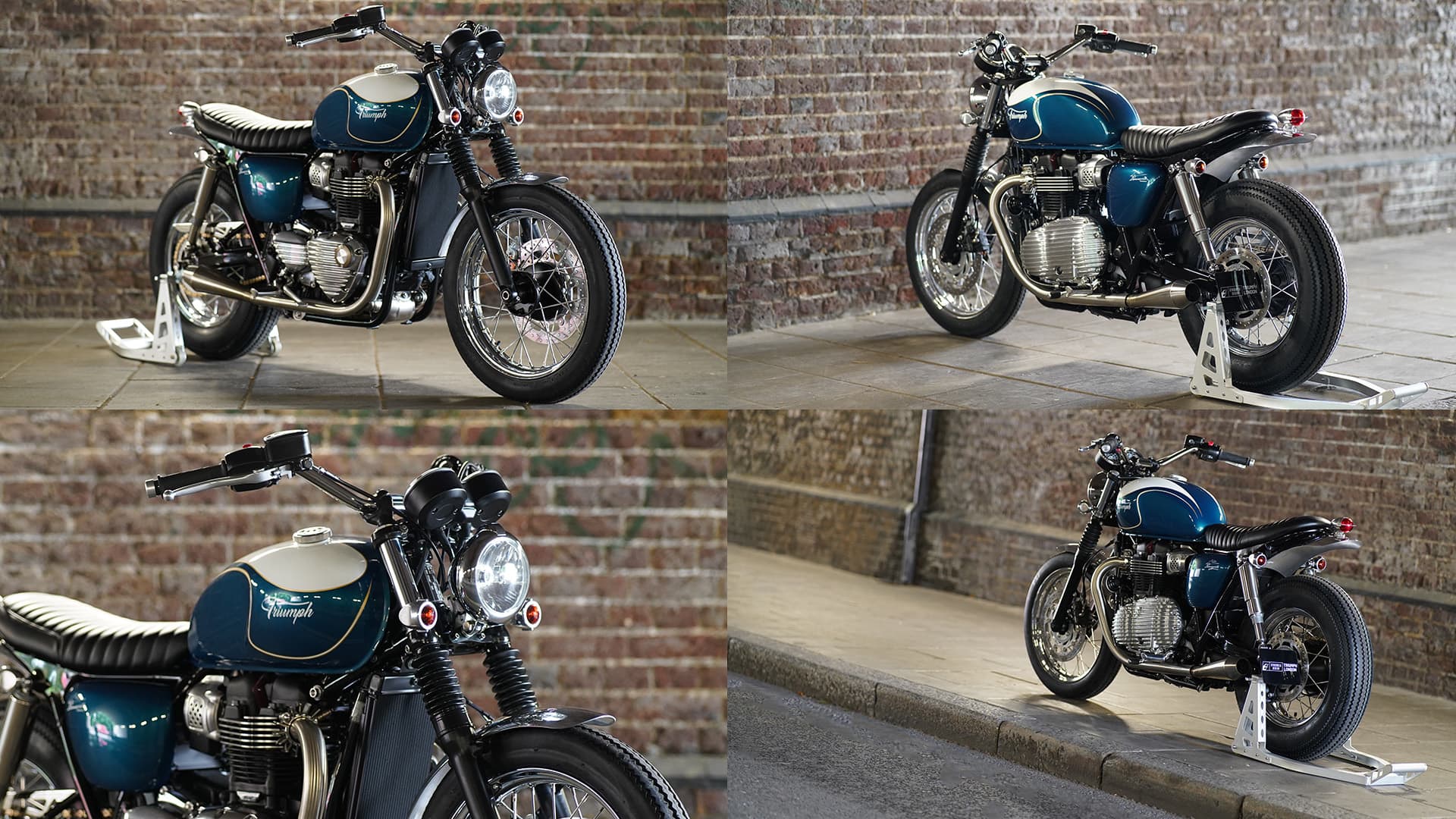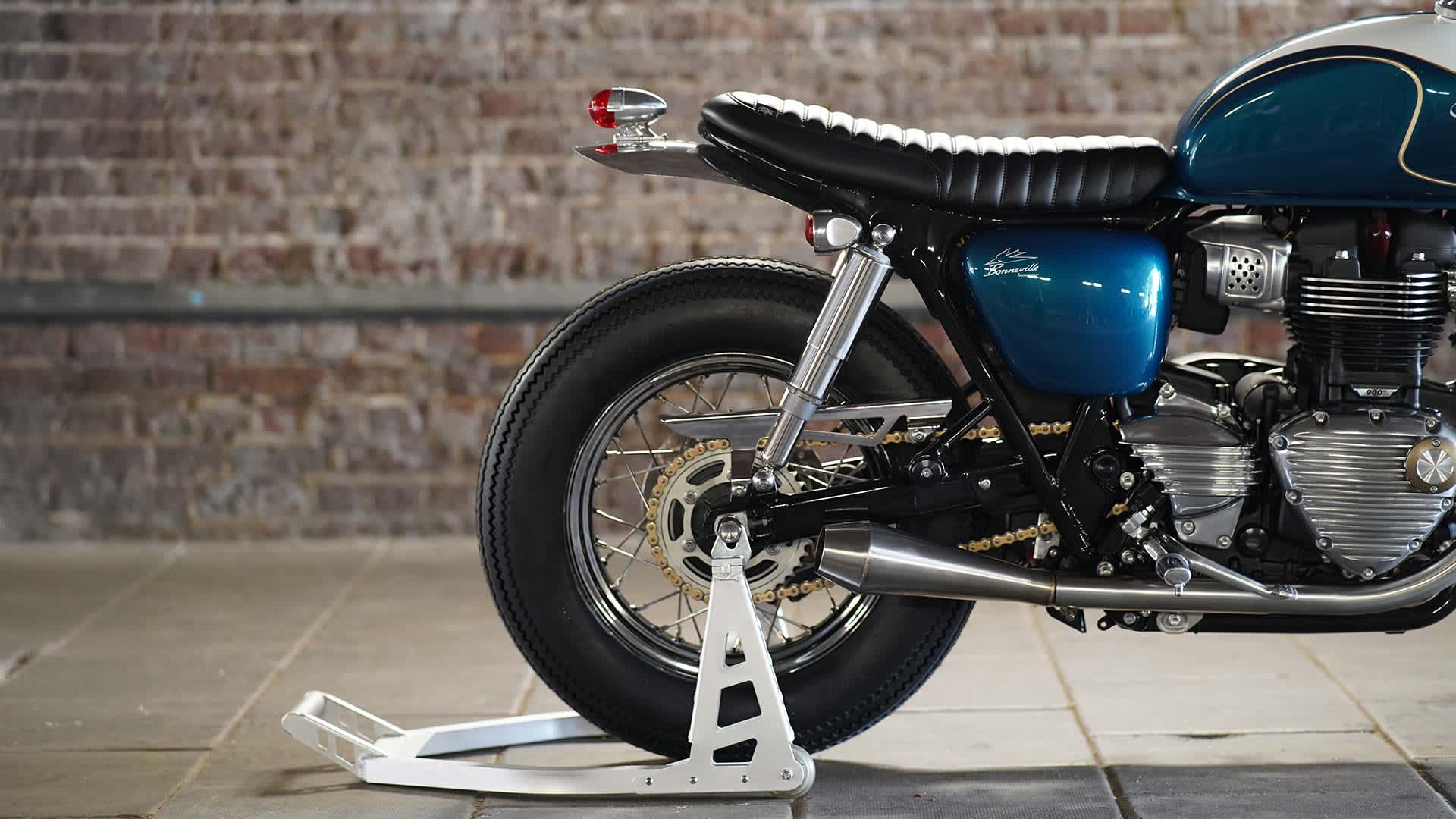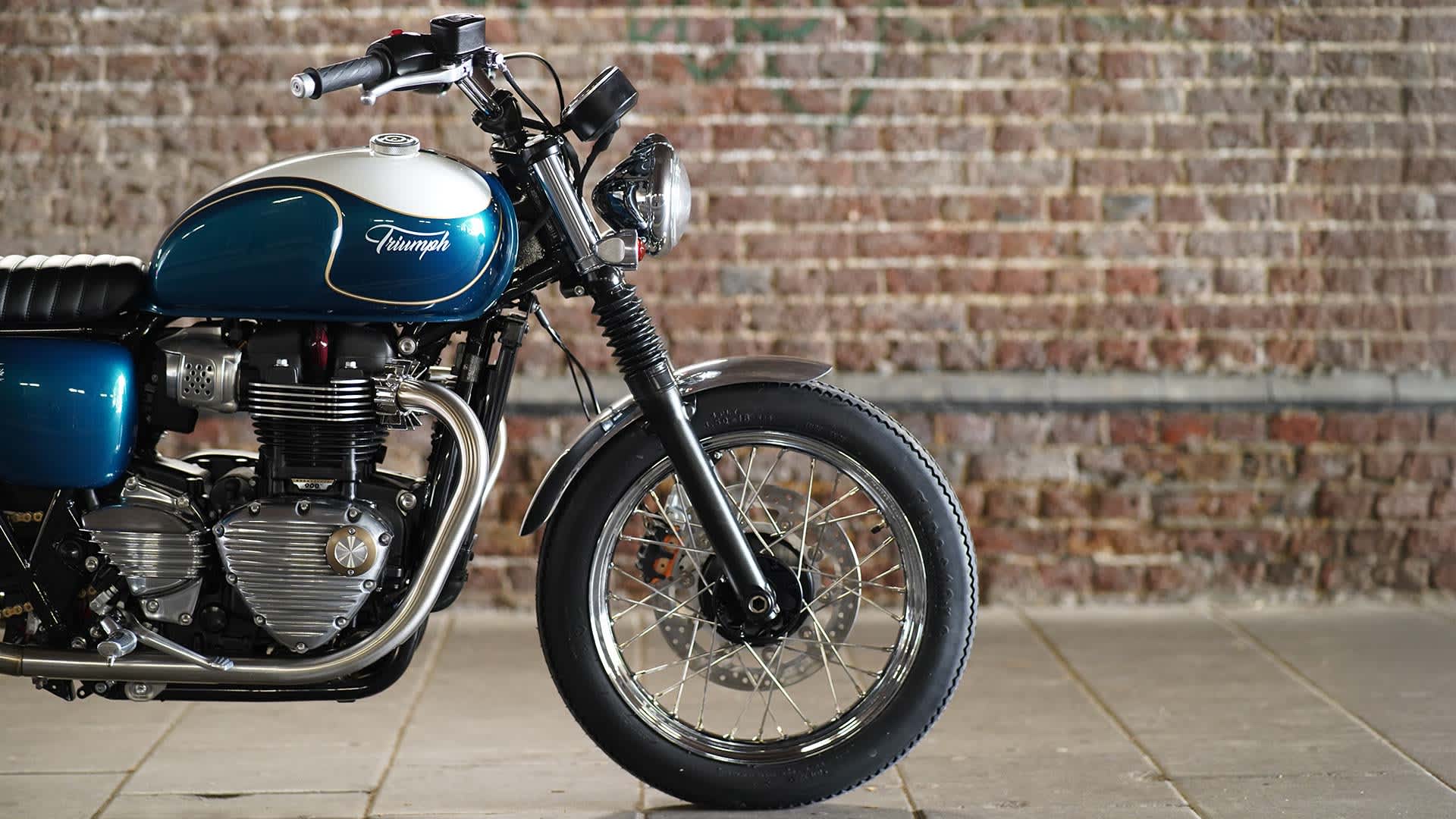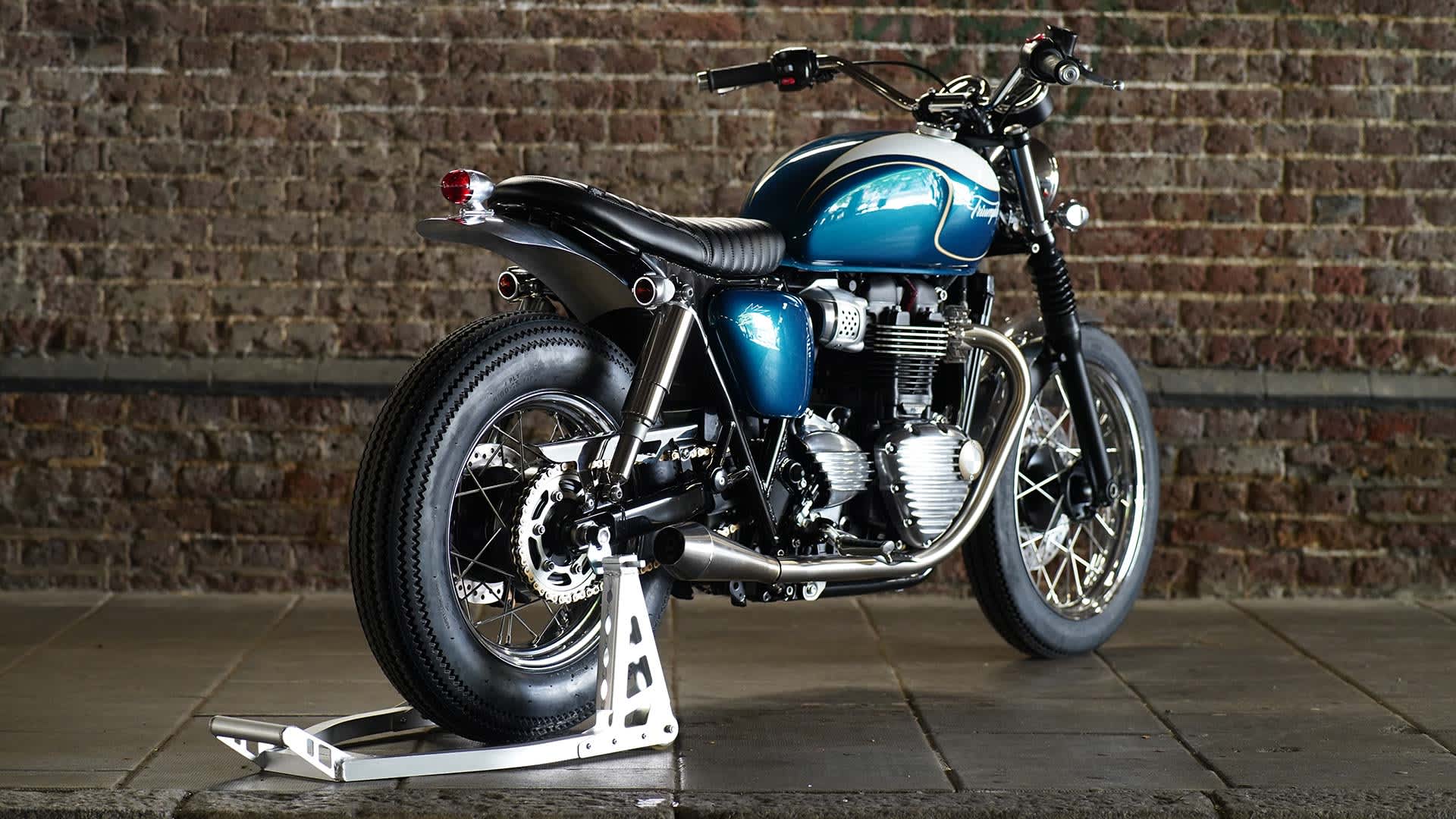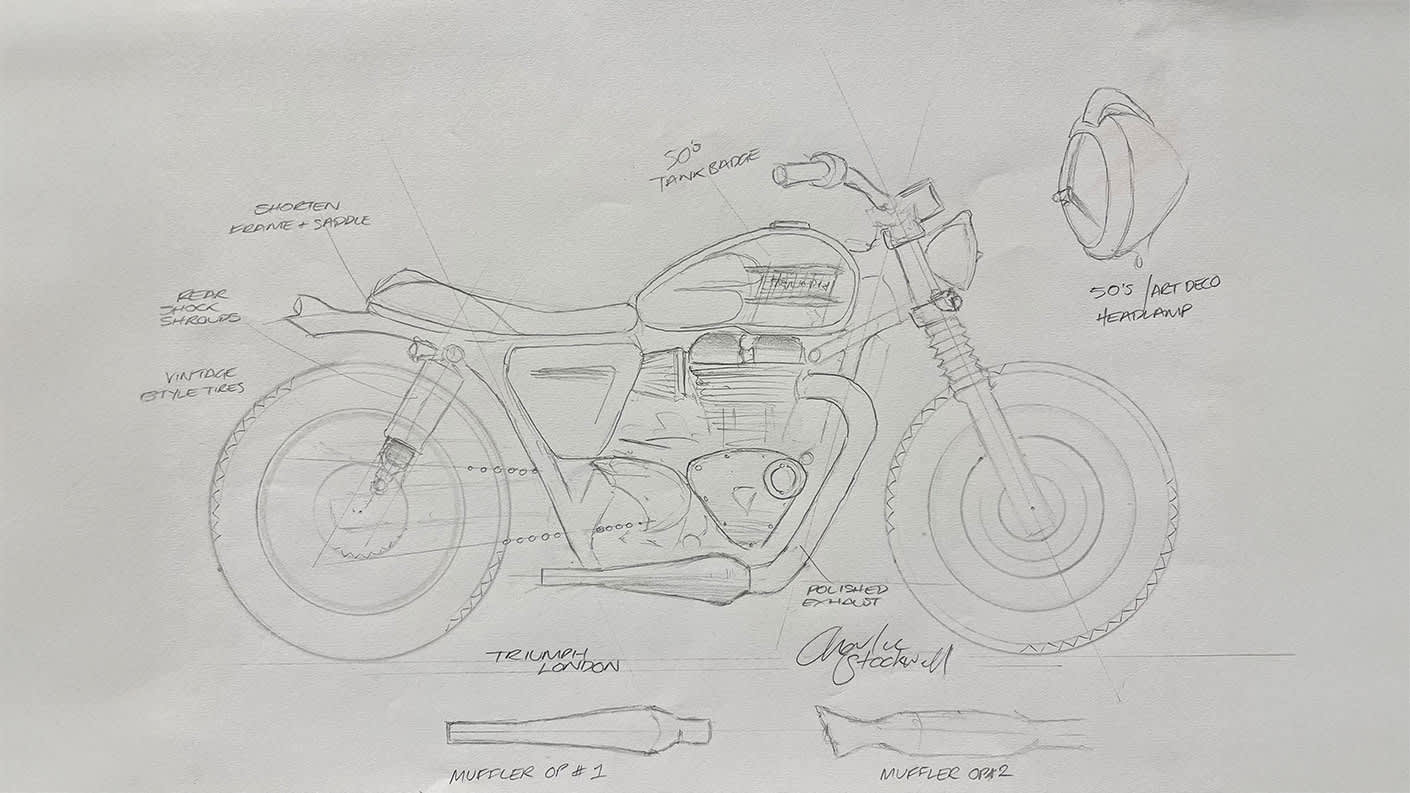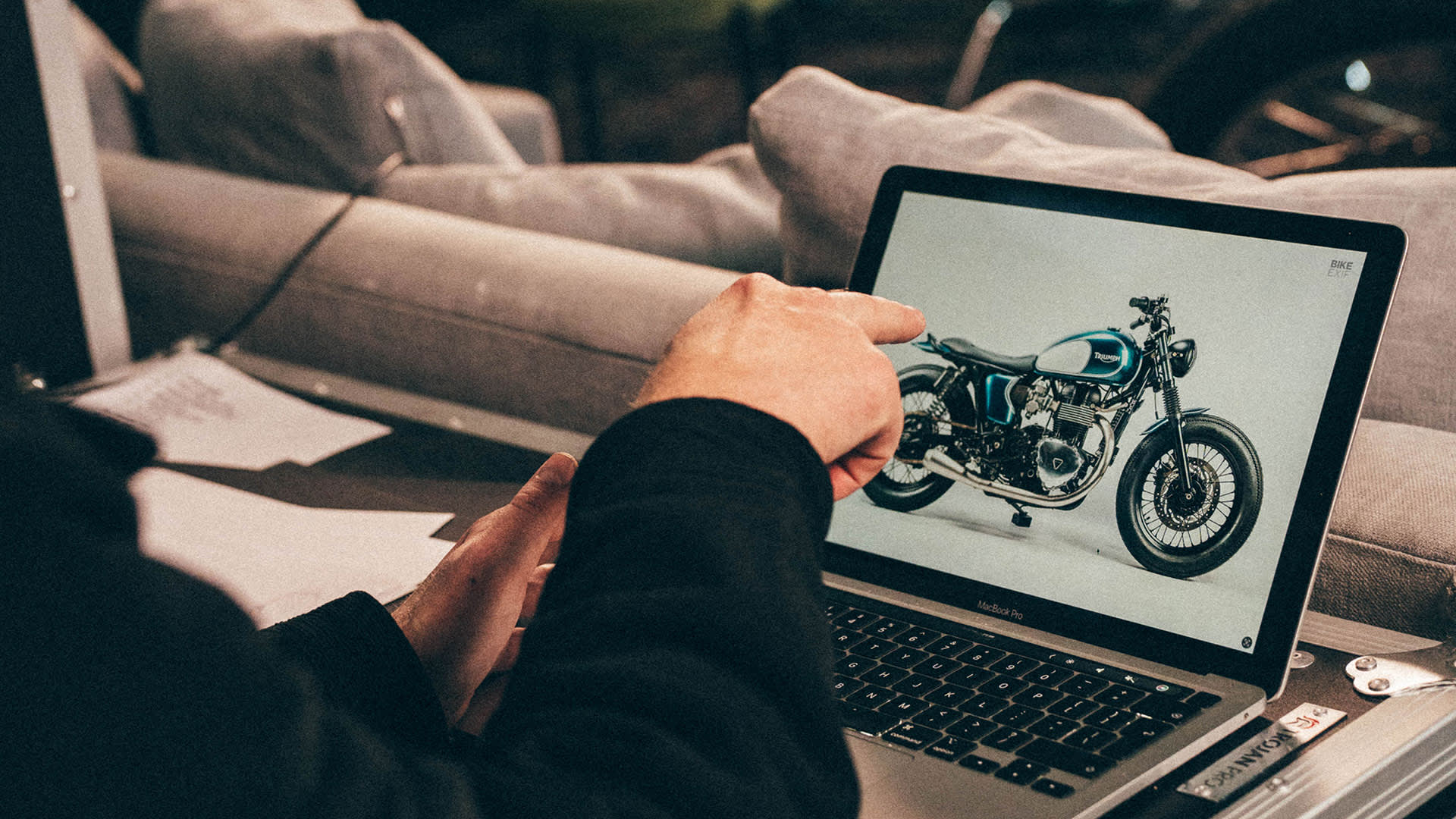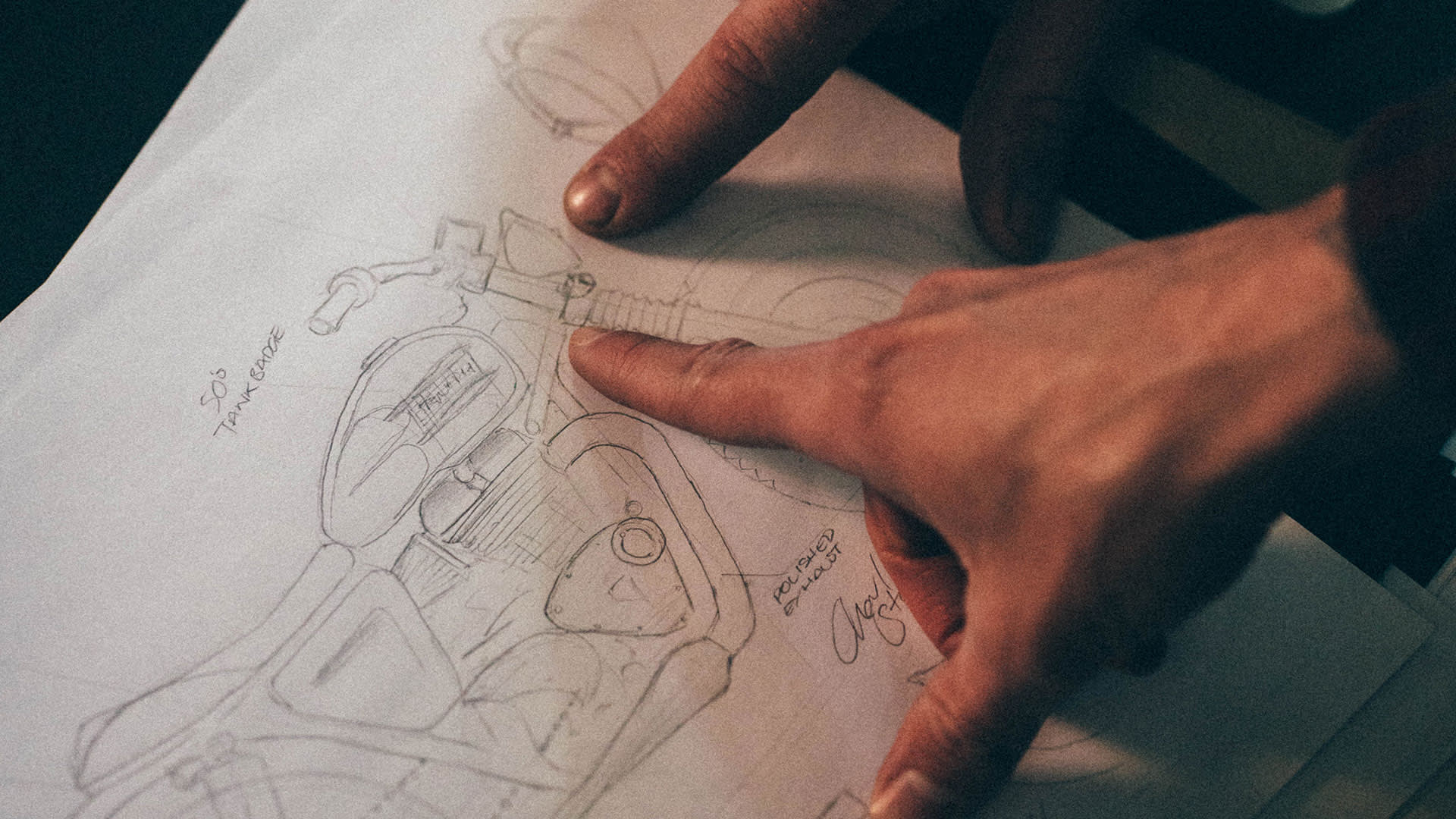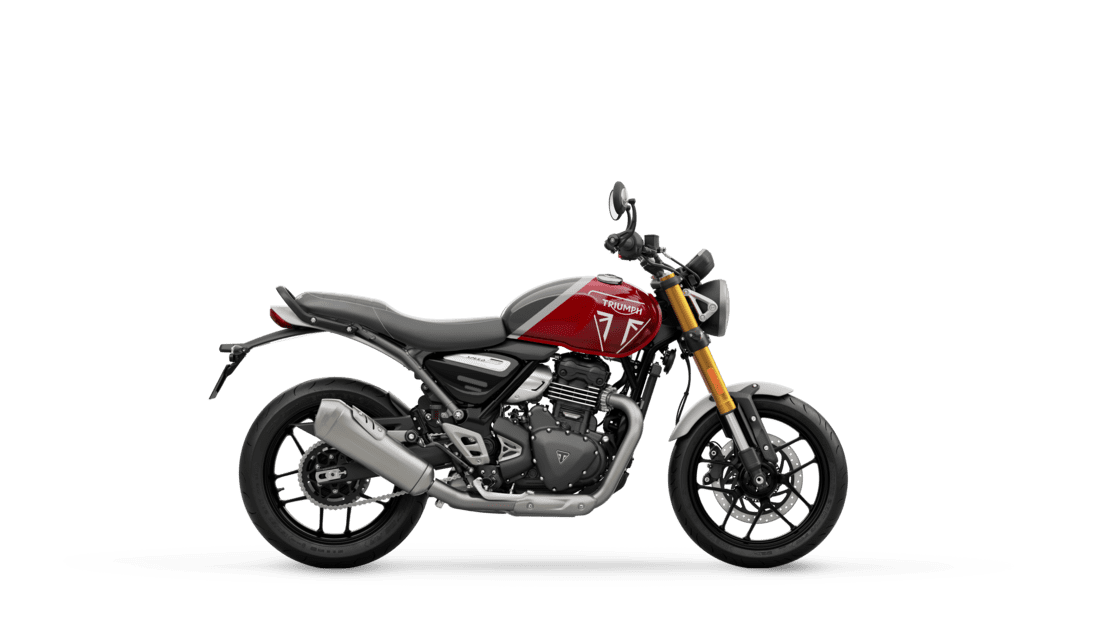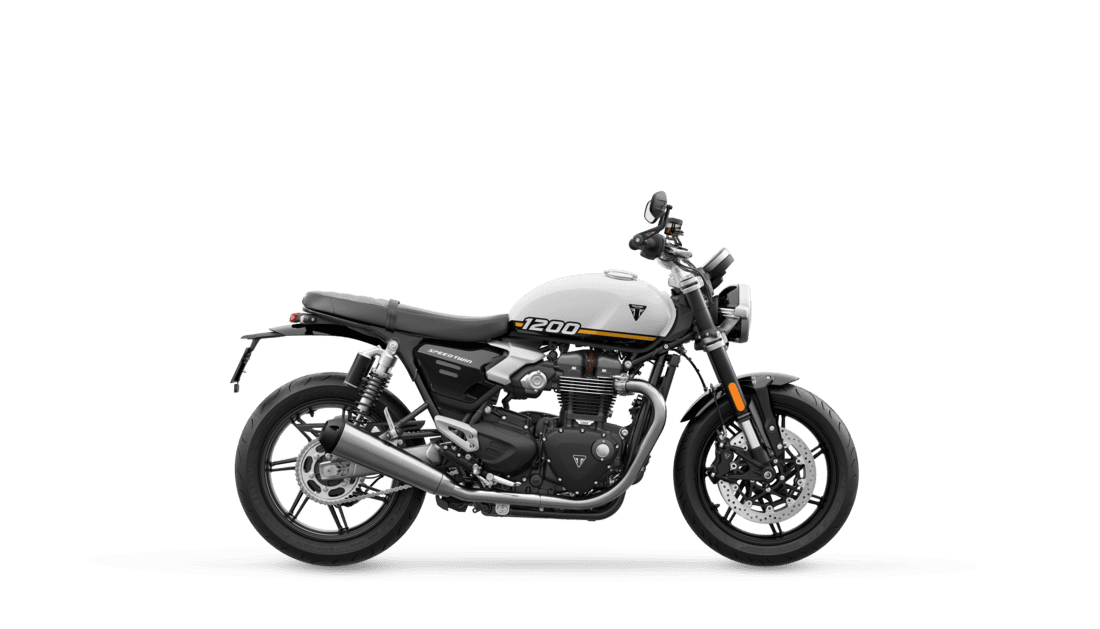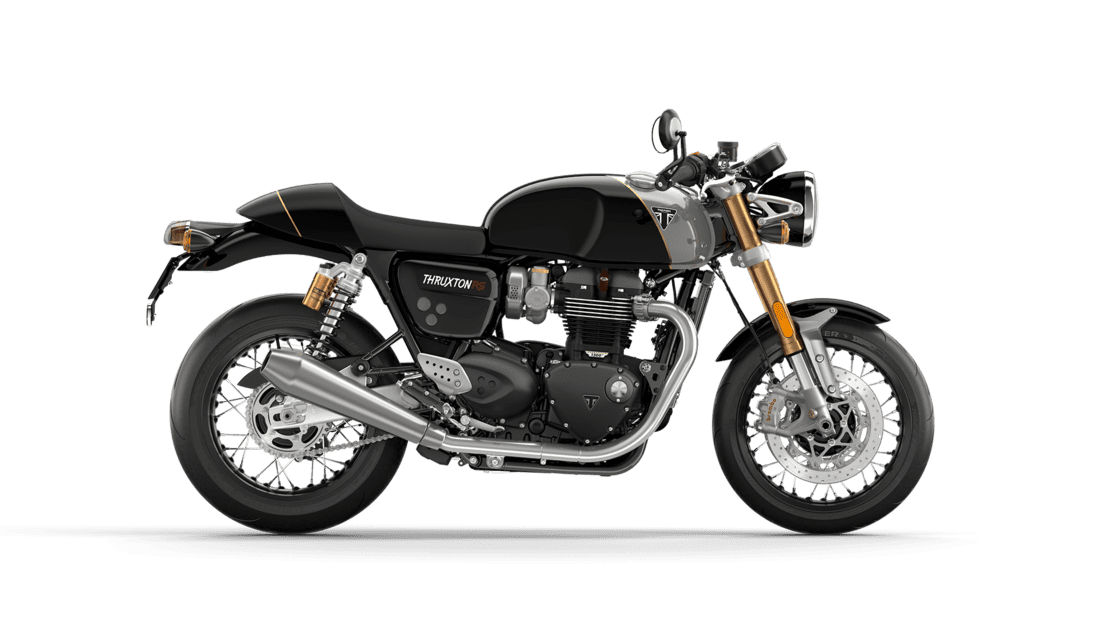TRIUMPH ORIGINALS | STOCKWELL DESIGN
UNITED KINGDOM
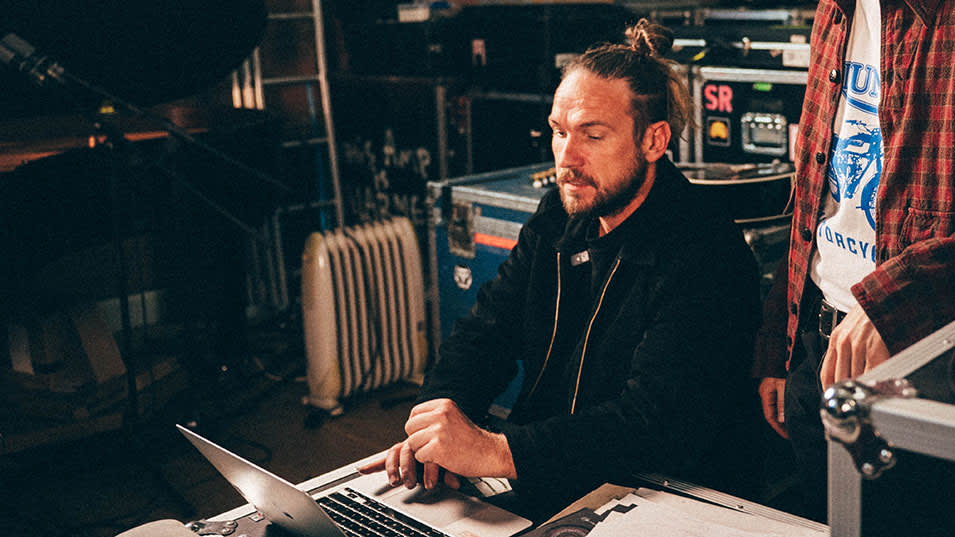
At the core of their process is a relentless attention to detail, where every part must serve a purpose. For them, each bike is imagined down to its smallest component, with nothing included without intent. The team have applied this refined style to the customs brief, capturing a modern take on the Bonnevilles of the 50s and 60s – bikes which the team define as “the ultimate British icon.”
With such a focus on the fine details, when asked what the most rewarding part of the process is, the team described the moment when you take a step back from the workbench and take the photos of each build. It’s sometimes only then, when you appreciate the project.
"Don’t rush! And don’t let others rush you. Let the ideas develop."
How did you get into Customs?
My brother-in-law, Ian Thomas, is responsible for all things motorcycles. He taught me to ride when I was 10, helped me build my first custom bike when I was 15, and then went on to mentor me at the start of my career as a mechanic way back in 1996.
What draws you to customising Triumph motorcycles, particularly the Bonneville range?
The Triumph Bonneville is a true British Icon and as a Brit, you can’t help but feel proud to be working on them. The Bonneville has got to be one of the most recognised bikes ever. I remember Ian’s friends riding Triumphs when I was young and always thought how cool they looked.
What do you think makes the Bonneville platforms a great platform for custom builds?
It gives us custom builders the perfect start! The chassis and motor are sound – there isn’t much we need to change there. A lot of the time we want to keep that iconic silhouette anyway!
How would you describe your approach to custom bike building?
Don’t rush! And don’t let others rush you. Let the ideas develop. The best ideas come to you that way. If you force yourself into designing right now, you’ll never put out your best work. I like to see the finished project in my head before I start collating a list of parts and designs. When I have that image in my head… then I’ll start.
What makes your builds unique compared to others in the custom scene?
The small details. Keeping the bike neat and tidy. There are thousands of custom builders out there now from when I started. Lots of the bikes look kinda similar and there are some great bikes being built. It’s also about the experience and friendship you grow with the customer along the way. I want them to feel involved and enjoy the project from start to finish. That’s a big part of the bike.
What was your initial reaction to the ‘Icons of British Originality’ design brief?
It fits my style. I like details and those with good reason behind them. We get to really express ‘iconic’ Britishness and the archives of Triumph Motorcycles. I enjoy looking and researching older models of Triumph and borrowing ideas from the Bonnevilles of the past.
What aspect of British culture has influenced your response to the brief?
Quite a bit actually. Obviously, the early Bonneville models. The small but unique details on some of those you’ll see in our build. We’ve borrowed ideas from the 50’s and 60’s rock ’n’ roll days. The vibe, the fashion, the aviation industry, the autocar industry… metal finishes and shapes. Everything was bloody cool back then!
What's your favourite part of the build process, and why?
I enjoy all of it. If I had to narrow it down, then it would be making the small detailed parts. Those bits are often small and not in your face, but they make a big difference once you start looking deep into each bike.
Is there a golden rule you always follow when building a custom, and is there one rule you love to break?
I prefer not to mess with the main wiring harness too much. I like to keep that as ‘factory’ as possible. When we do have to, we at least use the same colour wires to make it easy for someone to follow should they ever need to work on the bike. A lot of my bikes go out of the country, so I like to think we help the next technician who’s servicing the bike. I insist on using quality brands for parts too.
And one rule we love to break? Aren’t we breaking the rules of the original designers already?
Explore the Modern Classics

